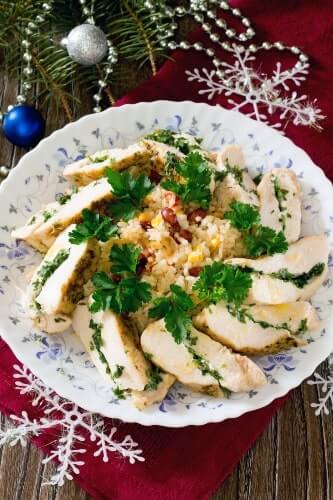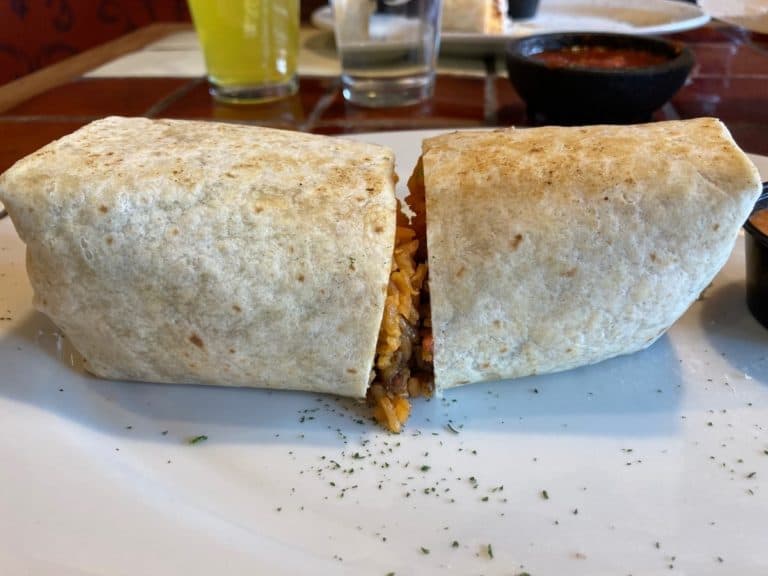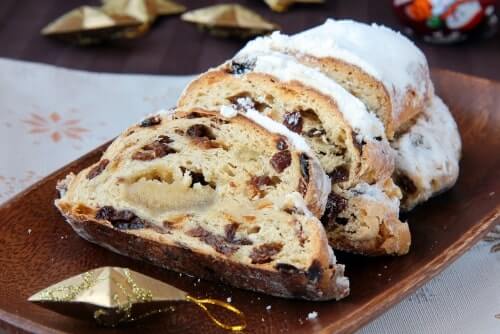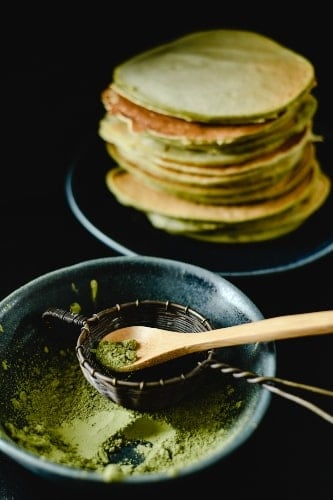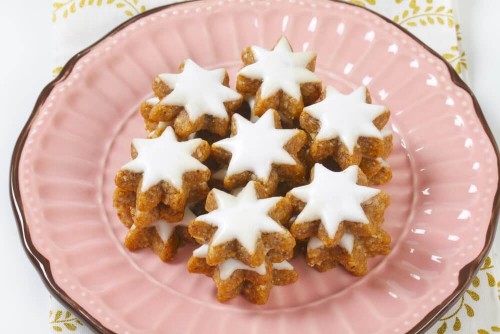Holy Week Food Ideas and Traditions From Around the World
Having a week off from school for Holy Week was a culture shock for me (in a good way). As mentioned in previous posts, although I was born in Costa Rica, I was raised in the United States. Fortunately, I had the opportunity to study abroad for a whole year while I was in college. Also, I was fortunate to be able to stay with my family while I studied at the local university. I learned a lot about my Costa Rican heritage and culture while I was there. Semana Santa (Holy Week) is forever ingrained in my head because of the Holy Week traditions and the good Holy Week food! In this post, I will explain the Holy Week traditions and foods in the following countries: Costa Rica, the Philippines, Mexico, and Spain.
Scroll down to the bottom of the page if you’re looking for just a list of Holy Week food by country.
[There are affiliate links in this post. Read my disclosure policy to learn more]
What is Holy Week All About?
Holy week is one of the most sacred days of the year for many Christians around the world. It’s a week to commemorate Jesus’ death and resurrection. It begins on Palm Sunday (the week before Jesus’ death) and ends on Easter Sunday (the day Jesus defeated death and rose from the grave).
Before studying abroad, I did not know that Holy Week is a sacred time of the year for many Catholic-dominated countries–Costa Rica being one of them. It is so sacred that, as I mentioned above, students get a whole week off from school and many businesses are closed, too!
Catholics, in particular, take special notice of three particular days during Holy Week called the Easter Triduum.
The first day of the Easter Triduum includes the evening of Holy Thursday, which is the evening before Jesus was put to death.
The second day is Good Friday, which is the day Jesus was crucified). The last day is Easter Sunday, which is the day Jesus rose from the grave (nativity.org).
Why is the Easter Triduum Important in the Catholic Church?
Holy Thursday is the day the Lord’s Last Supper is reenacted. The Last Supper is when Jesus is betrayed by one of his disciples and then later arrested. Also, during mass on Holy Thursday, priests wash the feet of 12 men, representing the 12 disciples. This is also the day they renew their vows.
Good Friday is the day Jesus was crucified on a cross and the day He died. On Good Friday, Catholics all over the world attend mass at 3 o’clock in the afternoon, which is the time that many people believe Jesus died.
A vigil is held on Holy Saturday in remembrance of Jesus’ death. In the Catholic faith, it is believed that Holy Saturday is when Jesus went down into the netherworld to bring people up with Him to Heaven.
Also, Holy Saturday is when many Catholics receive baptism and confirmation into the Catholic Church (catholiceducation.org).
So, as you can see, for many Catholics around the world, Holy Week is a time to remember Jesus and all that He did to save them so that they can be with Him.
What is Semana Santa in Costa Rica?
If I haven’t already mentioned it before, Semana Santa translated to English is Holy Week.
Semana Santa Traditions in Costa Rica
As I mentioned earlier, in Costa Rica, students get the week off from school and many businesses are closed to give people the opportunity to observe the Holy Week traditions including the Holy Week food traditions.
On Palm Sunday, also known in Spanish as Domingo de Ramos, many parishes reenact the day Jesus entered Jerusalem for the Jewish Passover.
In this biblical story, people welcomed Him with palm branches as he entered the city.
This is very sacred to many Christians because Jesus entered the city knowing He was going to be tried and crucified. Despite this, Jesus entered anyway because of His great love for people and His yearning to save people from their sins (christianity.com).
Thursday night is when the procession of the Last Supper occurs. During this time, people walk silently to the church where the Last Supper is enacted.
On Good Friday, there is another procession where families from all over walk together to church to the beat of a drum.
Along the route, there are what is called the 14 Stations to the Cross where small alters are placed. This is also where people stop and read or act out a passage from the bible.
The procession ends with Jesus’ crucifixion, which normally takes place on the church lawn or a large field where a large group of people can gather (ticotimes.net).
During Easter Sunday, churches hold processions of the Resurrection.
Semana Santa Food in Costa Rica
Here is some special Holy Week food that is cooked and consumed in Costa Rica:
(You can click on the options below to navigate to the recipe)
The year I was in Costa Rica, for Semana Santa my family and I had ceviche, chiverre, heart of palm salad, and agua dulce (you can learn more about agua dulce on my 13 Hot Drinks from Around the World page).
Empanada de Chiverre from Costa Rica (Costa Rican dessert)
Although my family made their own chiverre spread, many Costa Ricans just purchase miel de chiverre and use it to make empanadas.
If you want a visual, I found a really awesome Youtube video of someone making miel de chiverre (and miel de chiverre empanadas) in Costa Rica.
Although this Youtube video from Sabores en lÍnea is in Spanish, there is a way to turn on the English subtitles. Just follow the following steps:
- 1: Click the “settings” icon (it looks like a gear)
- 2: Click on “subtitles”
- 3: Click “Spanish (auto-generated)”
- 4: Click on “subtitles” again
- 5: Click “auto-translate
- 6: Click on the English option
Now, if you would like to follow a written recipe, you can find one on Pura Vida Moms. Christa, of Pura Vida Moms, provides step-by-step instructions for how to make this delicious dessert from Costa Rica.
What is Mahal na Araw or Semana Santa in the Philippines?
This is how to say Holy Week in the Philippines!
Holy Week Traditions in the Philippines
Similar to Costa Rica, the Philippines is a predominantly Catholic country with about 81% of the population practicing Catholicism (asianjournal.com).
Interestingly, many people do not work on Holy Thursday and Good Friday because those are national holidays (many employers give employees Wednesday off, too) (ucanews.com)
Palm Sunday
To begin the Holy Week traditions, Filipino Catholics purchase palm leaves (palaspas) on Palm Sunday and take them to the local priests to get blessed. After mass, they take the leaves home and hang them on windowsills and roofs for good fortune.
Also occurring after mass on Palm Sunday is what Filipinos call the pasaba, which is the reading of religious texts. This all-night or all-day reading can be a public event organized by the community or it can be held in private in friends and family’s homes. It begins on Palm Sunday and finishes on or before Good Friday.
During a pasaba, one group of people read or chant a verse and then another group of people reads or chants the following verse.
Another interesting aspect of Holy Week in the Philippines is sinakulo. These plays portray Jesus’ life, death, and resurrection and begin Palm Sunday to Easter Sunday.
Holy Thursday
Also, on the day of the Last Supper, Holy Thursday, people attend the Mass of the Last Supper. After mass, the Blessed Sacrament is placed on the altar. The church remains open for visitors in what Filipinos call the visita iglesia (when they visit seven chapels between Holy Thursday and Good Friday)
Good Friday
One of the main Holy Week events occurs on Good Friday. This event is called Siete Palabras, which are Jesus’ seven last words.
Siete Palabras begins at the church and goes from noon to 3 pm (when it is believed that Jesus died). Then, there is a procession of images that are carried around town in carriages.
The last religious image is of a dead Jesus. What occurs next is the search for Jesus by the three Marias.
Resurrection Sunday (Easter Sunday)
Lastly, Filipinos celebrate salubong on Easter Sunday. This is a 4 am vigil that commemorates Jesus’ mother, Mary, visiting Jesus after He had risen from the dead.
During the vigil (which occurs at church), there is an image of Mary that is brought together to an image of Jesus. Filipinos then celebrate Jesus being alive by throwing flower petals and singing songs.
Oh, and of course, food is involved, too 🙂
Holy Week Penitensya in the Philippines
Some of you may or may not have heard of penitensya. It is a controversial event because people crucify themselves as a testament to their faith (the church actually condemns this practice).
You can read more about it on CNN’s article titled Every Year a Filipino Man Marks Good Friday with an Actual Crucifixion. He Just Did It for the 33rd Time.
Moriones Festival in the Philippines
Also, many provinces in the Philippines hold a Moriones Festival. The purpose of this weeklong event is to observe and remember when blood from Jesus’ pierced body landed on Longinus’ (the name of the Roman soldier who pierced Jesus) blind eye and healed him.
Interestingly, during this festival, people dress up as Roman soldiers with colorful painted masks and helmets (Morion means mask, which was a part of the Roman soldier’s helmet) (asianjournal.com).
Popular Holy Week Food and Dishes in the Philippines
Similar to practicing Catholics in other countries, Filipinos refrain from eating meat during Holy Week (as well as on Fridays during Lent). Thus, many Catholics eat seafood and vegetables. Some popular Filipino Holy Week food (and Good Friday food) include the following:
(Again, you can click on the options below to navigate to the recipe)
- Inihaw na pusit (grilled squid)
- Tuyo (dried herring fish)
- Ginataang Kalabasa at Sitaw with shrimp or crab (Oxtail omitted for Lent and Holy Week)
- Seafood kare kare (thick stew with peanut sauce)
- Lumpiang gulay (vegetable springs roll)
- Pinakbet (vegetable dish – omit the meat to make it vegetarian for Holy Week)
Another Simple Lumpiang Gulay Recipe
As mentioned previously, lumpiang gulay is a vegetable spring roll (or a vegetable lumpia). It normally includes tofu as a protein component. The yummy thing about them is that they are deep-fried (DELICIOUS)!
In addition to the recipe I already provided to you in the link, Panlasang Pinoy has a Filipino recipe website where you can find this Lumpiang gulay recipe.
The super convenient thing about this page is that it includes a video as well as written instructions.
Check it out for yourself!
What is Semana Santa in Mexico?
Just like the other countries, Holy Week in Mexico begins on Palm Sunday and ends on Easter Sunday.
Also, just like Costa Rica and the Philippines, Semana Santa consists of masses, processions, and celebrations with delicious Holy Week food.
However, what makes Mexico so interesting is that Easter is celebrated for two weeks! The first of the two weeks is Holy Week, which is the week before Easter, and the second week is the actual week of Easter which they call Semana de Pascua (Easter week).
During these two weeks, schools are not in session and many businesses are closed (if they’re not, lots of people take these two weeks off from work to commemorate this time or to vacation).
Semana Santa Traditions in Mexico
Similar to Christmas, Holy Week is a very special and sacred tradition to observe.
Like other Catholic countries, Holy week beings on Palm Sunday with mass.
Palm leaves are woven together to form crosses and brought to the front of the church to be blessed.
What may be the most prominent days of the Holy Week are Holy Thursday (or Maunday Thursday), Good Friday, Holy Saturday, and Easter Sunday.
Maunday Thursday consists of masses and reenactments of the Last Supper. Also, similar to what they do in the Philippines, Catholics in Mexico visit seven churches (theyucantimes.com).
According to The Yucan Times, the purpose of this tradition of visiting the seven churches is to create an atmosphere of prayer and meditation.
On Good Friday, many people reenact the crucifixion of Jesus in plays.
Also, similar to what I described regarding Filipino Good Friday traditions, Mexican Catholics on Good Friday commemorate the Passion of Christ by displaying 14 images along the Stations of the Cross which portray Jesus’ sufferings for the salvation of people.
On Holy Saturday, people remember Jesus’ death. It’s a time of remembrance that represents mourning and sadness. In fact, in Mexico, you may see statues of the virgin Mary dressed in black on this special day (mexpro.com).
On Easter Sunday, also known as Resurrection Sunday, Mexican Catholics mark the end of Holy Week (and lent) by attending mass and spending time with family and friends.
Large Good Friday Celebration in Iztapalapa, Mexico
On a side note, the largest Good Friday celebration (or day of remembrance) takes place in a town south of Mexico city called Iztapalapa. This is where close to 1 million people gather for the Via Crucis (Way of the cross).
If you’re interested in learning more about this event in Iztapalapa, I recommend you watch this Good Friday (Viernes Santo) YouTube video. It’s a few hours long, so of course, you don’t have to watch the whole thing 😉
(I highly recommend you watch some portions of the video. It’s actually quite interesting, in my opinion).
Semana Santa Food and Drinks in Mexico
There is a lot of delicious food that is made, served, and consumed during Holy Week in Mexico.
Besides traditional food that one can make at home, Semana Santa is a time when many street vendors come out to the various large celebrations occurring throughout the country (like Iztapalapa, for example).
Some of the delicious and most scrumptious (and popular) Semana Santa foods include the following:
- Fried fish and other seafood
- Fresh fruit
- Ceviche
- Meat-free Molotes (turnovers)
- Aguas Frescas (water flavored with fruit)
- Raspados (snow cones)
The good thing is that some of these you can easily make at home! Aguas Frescas is super simple, for example.
Cooking con Claudia provides an EXCELLENT video on How to Make the Best Pineapple and Mango Agua Fresca.
You have to check it out for yourself! Soooo delicious!!!
What is Semana Santa in Spain?
Similar to other countries where Catholicism is the dominant religion, Spain, too, celebrates Semana Santa (Holy Week) with processions, festivals, and lots of food!
Read on to find out more about how people in Spain observe and celebrate Holy Week.
Semana Santa Traditions in Spain
Interestingly, a lot of the Semana Santa events occur in Seville where about 50,000 people participate (aleteia.org).
In Seville, you will find large, painted wooded images that are carried around villages on floats by brotherhoods called the cofradía.
So, what is a cofradía? It’s a fraternity of people from the church who organize charitable acts and commit good deeds for their communities (northernspaintravel.com).
This brotherhood dates all the way back to the 16th century!
What’s interesting is that while watching a procession, you’ll see people covered from head to toe in a garment and pointed hood that you might say resembles the Ku Klux Klan. They’re composed of a group of the cofradía called the nazarenos.
The purpose of this disguise, traditionally, is so that they could repent of their sins without others recognizing them (telegraph.co.uk).
To give you a better idea of what I’m talking about, take a look at the YouTube video below. You’ll start seeing the hooded figures at around the 1-minute, 30-second mark.
Watch further to see the statutes being carried on floats!
It’s SUPER interesting!
Anyway, the processions include these cofradías carrying candles and crosses and holding up sculptures of people representing certain scenes from the Bible.
Also, you can see and hear people playing musical instruments, like tambourines and cornets (uscannonbergmedia.com).
Semana Santa Food and Drinks in Spain
These are some of the most famous Holy Week food and drinks you can find in Spain:
- Torrijas (fried bread)
- Espinacas con Garbanzos (Spinach and Chickpeas)
- Croquetas de Bacalao (Salt Cod Croquettes)
- Cod and Potato Stew
- Pestiños (fried pastry soaked in honey and anise)
One of the Most Popular Foods for Semana Santa in Spain: Torrijas
Torrijas are one of the most famous foods to eat during Holy Week in Spain.
If you ever get the chance to go, keep in mind that each region makes its own version.
For example, in Madrid, they make torrijas soaked in milk (Torrijas de Leche) and seasoned with spices like cinnamon. In Andalucia, they soak theirs in honey. In Chinchon, they soak theirs in anise.
One thing you find in common with all these different versions is that they are all super sweet and super, duper delicious!
I already gave you a link for the written recipe, but I’ve found a very good torrijas YouTube video for those of you who are visual learners.
(Be careful! You’ll want to go out to the store and get the ingredients today if you don’t already have them. Actually, you may already have the ingredients since the recipe is so simple).
List of Holy Week Food Recipes by Country
As mentioned above, here is a list of some Holy Week food from Costa Rica, the Philippines, Mexico, and Spain.
Costa Rica
Philippines
- Inihaw na pusit (grilled squid)
- Tuyo
- Ginataang Kalabasa at Sitaw with shrimp
- Seafood kare kare (thick stew with peanut sauce)
- Vegan Pinakbet
Mexico
Spain
- Torrijas (fried bread)
- Espinacas con Garbanzos (Spinach and Chickpeas)
- Croquetas de Bacalao (Salt Cod Croquettes)
- Cod and Potato Stew
- Pestiños (fried pastry soaked in honey and anise)
Conclusion
There you have it! I hope you learned a lot about the different Holy Week (Semana Santa) traditions around the world and I hope you get the chance to try some of the delicious recipes included!
Do you have one you’re just itching to try?
Feel free to let me know!
Articles Related to Semana Santa (Holy Week) Recipe Ideas
- Popular Easter Recipes from Different Countries Around the World
- St. Paddy’s Holiday Green Food Meals, Snacks, and Drink Ideas
- Easy Ramandan (Iftar) Meal, Snack, and Drink Recipes
